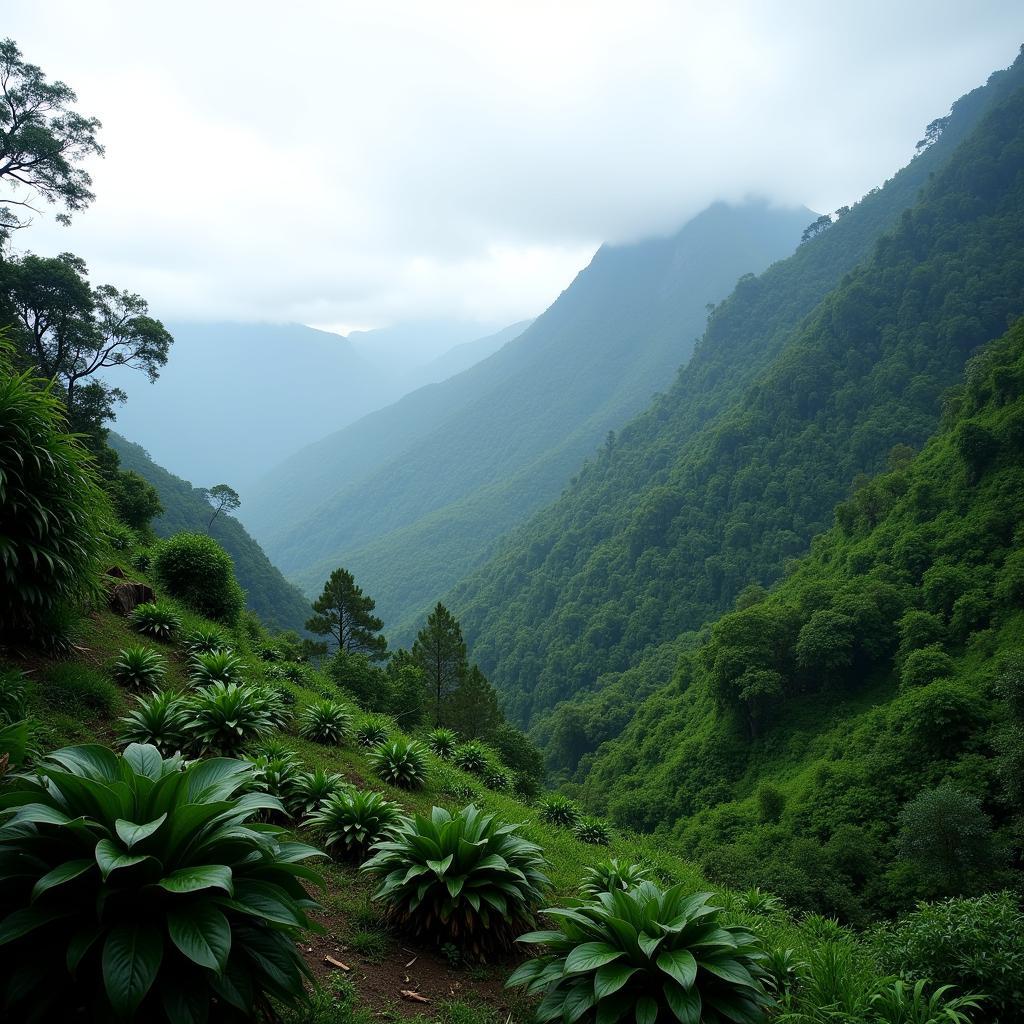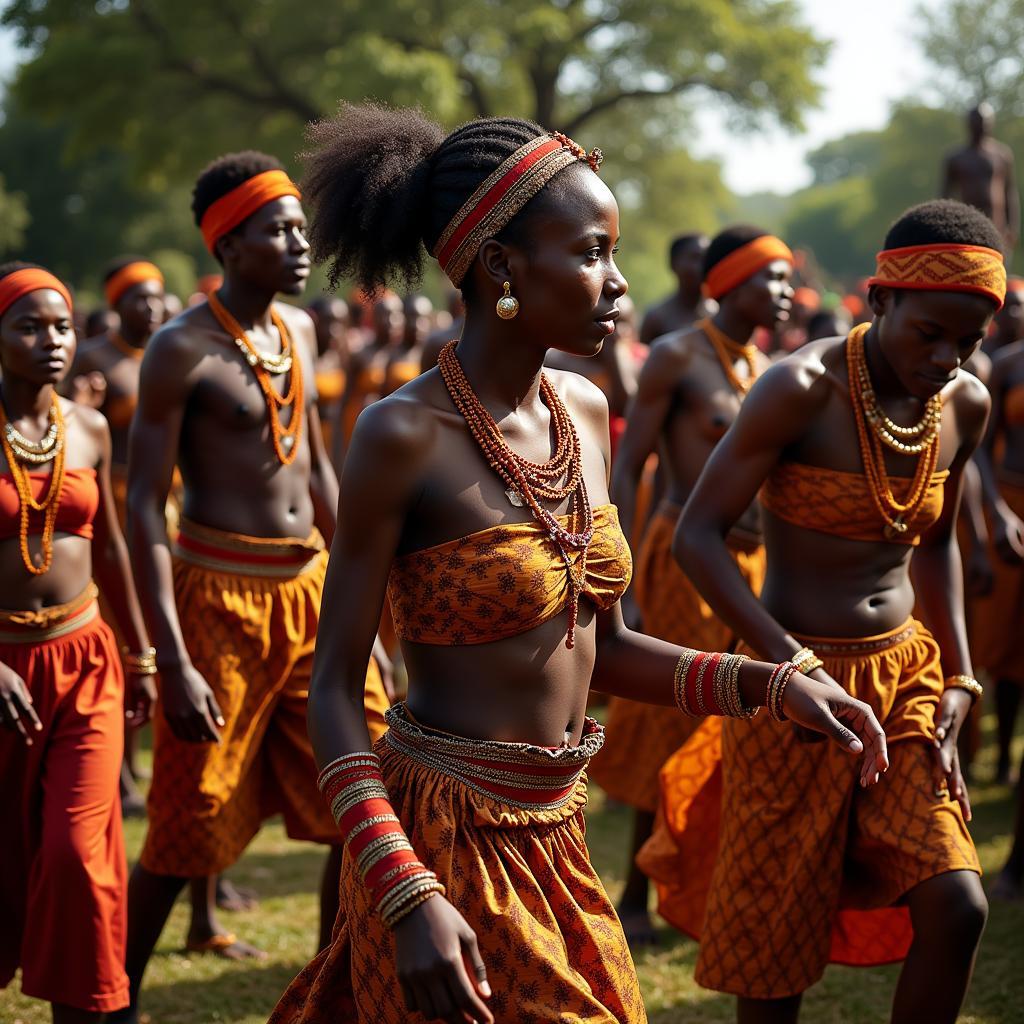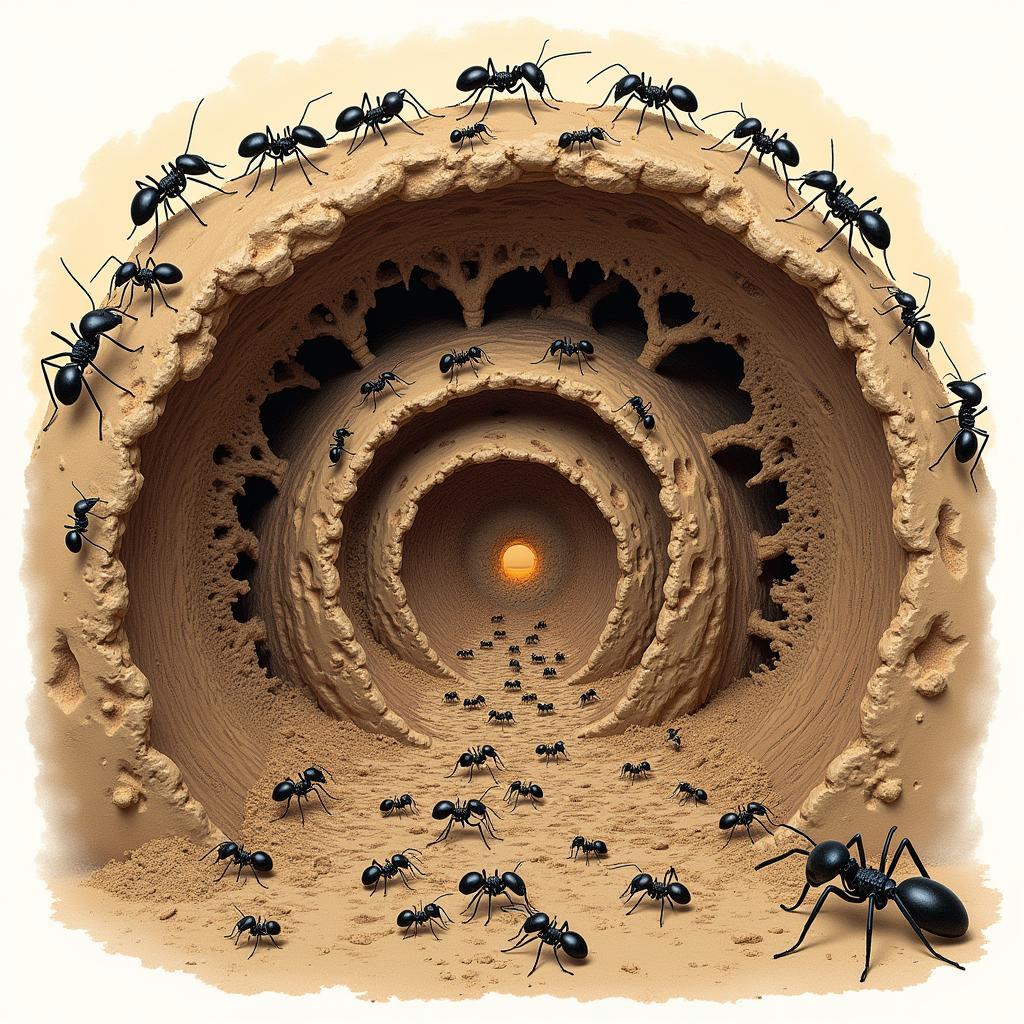Exploring the African Gorilla Habitat
African Gorilla Habitat is a crucial topic for understanding these magnificent creatures and their conservation. Gorillas, the largest living primates, call the dense forests of Central Africa home. Understanding their habitat requirements is essential for their survival. Let’s delve deeper into the world of these gentle giants and the environment they inhabit.
Where do gorillas live? They reside in two distinct regions: the lowland forests of western Central Africa and the mountainous forests of eastern Central Africa. These areas, although geographically separated, share some similarities while also presenting unique characteristics that shape the lives of the gorillas that call them home.
Decoding the Western Lowland Gorilla Habitat
Western lowland gorillas, the most numerous gorilla subspecies, thrive in the dense, swampy forests of countries like Cameroon, the Central African Republic, the Republic of the Congo, Equatorial Guinea, Gabon, Angola, and the Democratic Republic of the Congo. This region is characterized by dense vegetation, including a variety of fruit trees, herbaceous plants, and vines that make up the gorilla’s diet. Navigating these dense forests isn’t always easy, and gorillas have adapted to this environment. They construct nests on the ground from foliage, providing a comfortable resting place after a day of foraging.
The climate here is hot and humid, with consistent rainfall throughout the year. This provides ample water sources and a rich diversity of plant life that sustains the gorillas.
 Western Lowland Gorilla in Dense Forest Habitat
Western Lowland Gorilla in Dense Forest Habitat
Unveiling the Mountain Gorilla Habitat
In contrast to their lowland cousins, mountain gorillas inhabit the higher altitudes of the Virunga Mountains, spanning across Rwanda, Uganda, and the Democratic Republic of Congo, and the Bwindi Impenetrable National Park in Uganda. As their name suggests, these gorillas live in mountainous terrain, often at elevations between 8,000 and 13,000 feet. The vegetation here differs significantly from the lowland forests. Bamboo, thistles, and other hardy plants dominate the landscape, adapted to the cooler temperatures and higher rainfall.
The mountain gorilla habitat, while seemingly harsh, provides the necessary resources for these primates. They, too, construct nests, but they often build them on the ground or in low-lying vegetation for added warmth in the colder mountain climate.
 Mountain Gorilla Habitat in the Virunga Mountains
Mountain Gorilla Habitat in the Virunga Mountains
Threats to the African Gorilla Habitat
Unfortunately, the African gorilla habitat faces several threats. Deforestation due to logging, mining, and agricultural expansion is a significant concern. This shrinks the gorillas’ living space and fragments their populations, making them more vulnerable. Poaching and the illegal pet trade also pose serious risks. Disease transmission from humans is another threat, highlighting the importance of responsible tourism and research practices. Climate change also plays a role, altering weather patterns and potentially impacting the availability of food and water resources.
african jungle safari sex vedios
What is the importance of conserving the gorilla habitat?
Conserving the gorilla habitat is crucial not only for the survival of these iconic primates but also for the health of the entire ecosystem. Gorillas play a vital role in seed dispersal, contributing to the regeneration of forests. Their presence also supports local communities through tourism and conservation initiatives. Protecting the gorilla habitat ensures the preservation of biodiversity and the valuable ecosystem services it provides.
Conclusion
Understanding the African gorilla habitat is crucial for their conservation. By protecting these vital ecosystems, we safeguard the future of these magnificent creatures and contribute to the overall health of our planet. Supporting organizations dedicated to gorilla conservation and promoting responsible tourism are essential steps in ensuring their long-term survival in the wild. The African gorilla habitat continues to face challenges, but with dedicated efforts, we can ensure these gentle giants thrive for generations to come. Remember, the survival of these incredible animals depends on the preservation of their unique and fragile habitats.
FAQs
- What do gorillas eat? Gorillas are primarily herbivores, consuming a diet of leaves, stems, fruits, and occasionally insects.
- How long do gorillas live? Gorillas can live up to 35-40 years in the wild.
- Are gorillas endangered? Yes, both mountain and western lowland gorillas are classified as endangered.
- How can I help protect gorillas? You can support conservation organizations, choose sustainable tourism options, and raise awareness about gorilla conservation.
- Where can I see gorillas in the wild? Gorilla trekking is possible in Rwanda, Uganda, and the Democratic Republic of Congo.
Gorilla Habitat Conservation Costs
| Activity | Estimated Cost |
|---|---|
| Park Entrance Fees | Varies by park |
| Gorilla Trekking Permits | Varies by country |
| Donations to Conservation | Variable |
Common Scenarios and Questions
Scenario: Planning a trip to see gorillas.
Question: What are the best times to visit for gorilla trekking?
Scenario: Concerned about the impact of tourism on gorillas.
Question: How is gorilla tourism regulated to minimize its impact?
Further Exploration
For more information on related topics, explore:
For any assistance, please contact us: Phone: +255768904061, Email: kaka.mag@gmail.com, or visit us at Mbarali DC Mawindi, Kangaga, Tanzania. Our customer service team is available 24/7.




